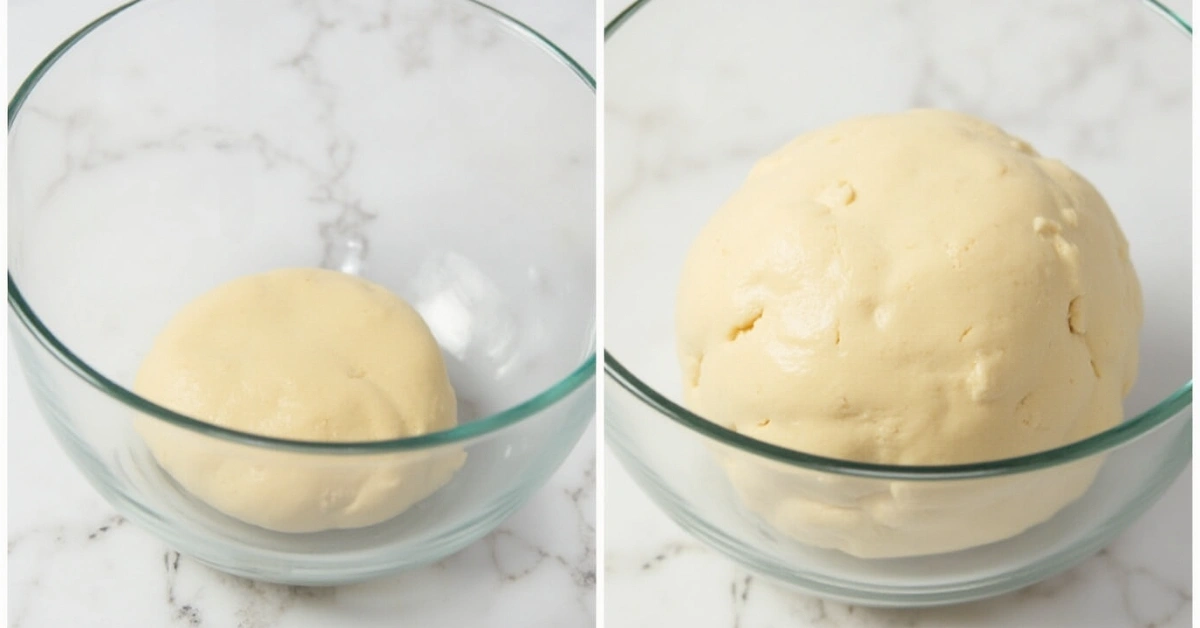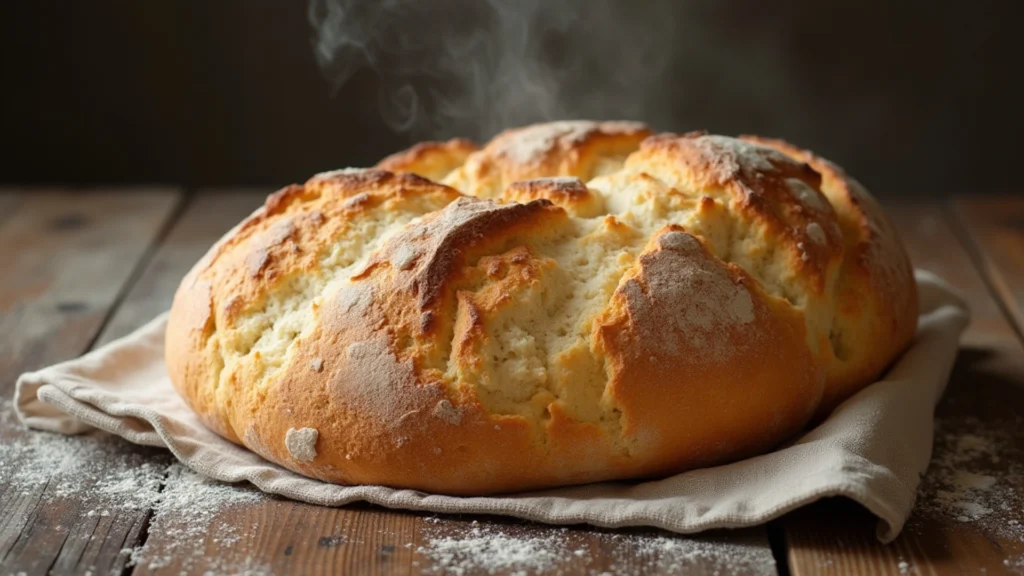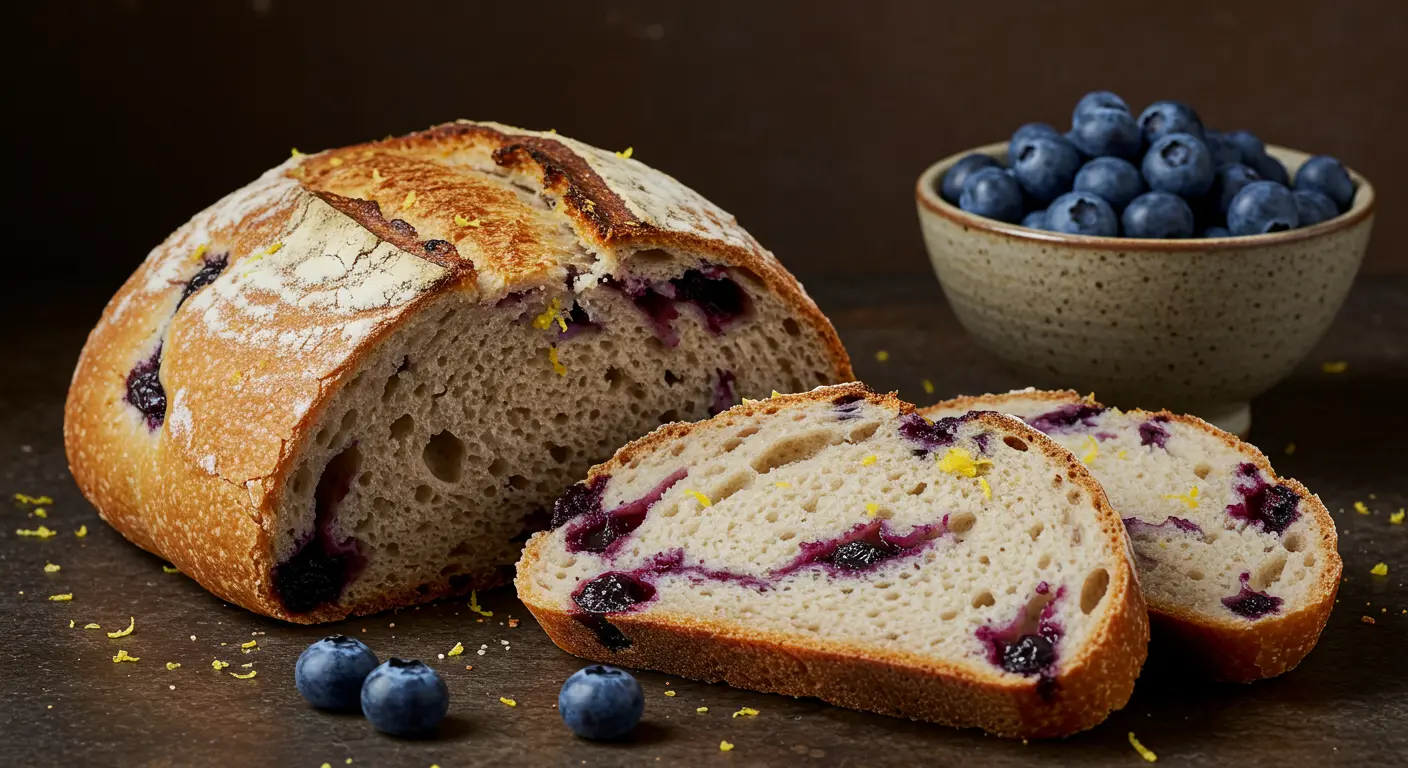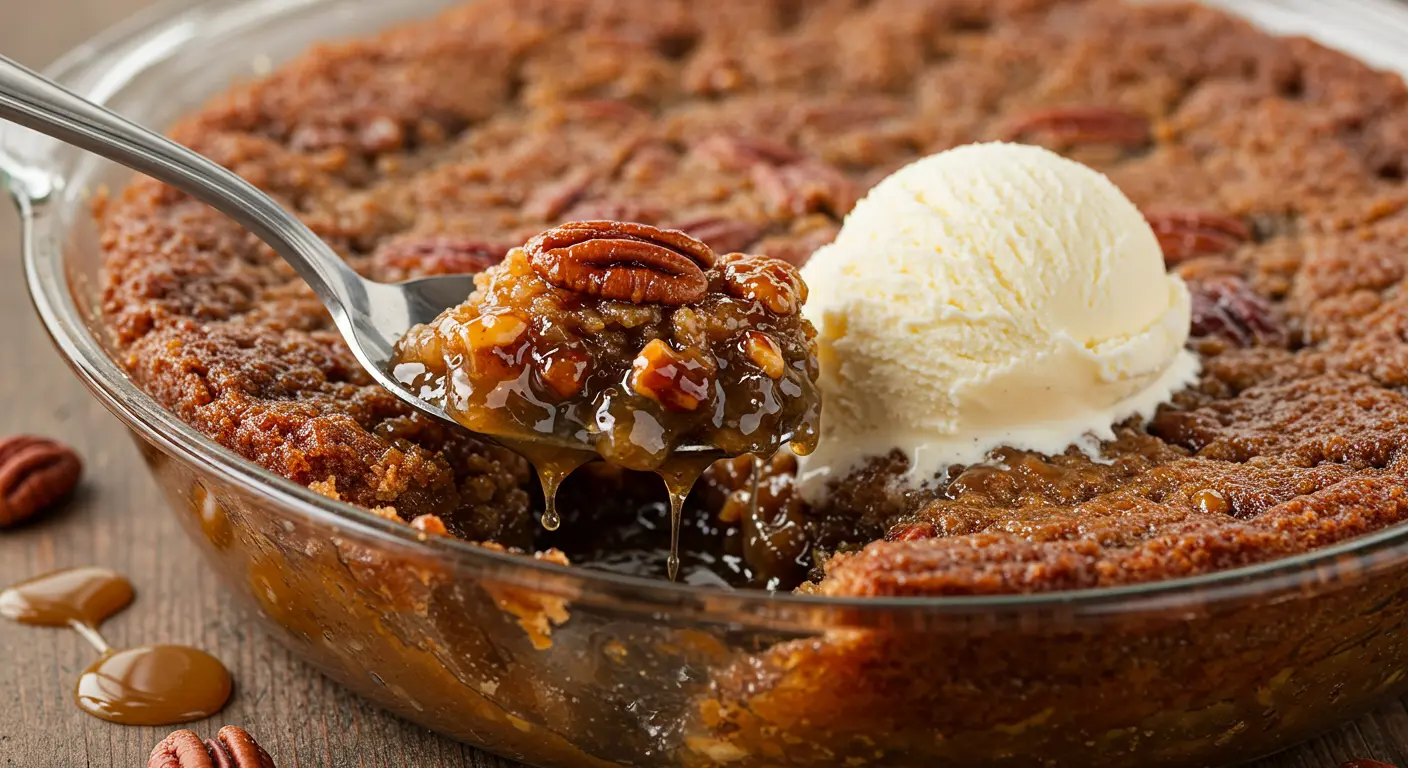Picture this: A warm, golden-brown loaf emerging from the oven, its crust crackling with a delicate crispness, releasing an intoxicating aroma that fills every corner of your kitchen. This isn’t just any bread—this is a cottage cheese bread recipe that transforms a simple kitchen staple into a culinary revelation that will completely reshape your approach to home baking.
My journey with this cottage cheese bread recipe began on a crisp autumn morning, born from a moment of culinary curiosity and an overabundance of cottage cheese sitting in my refrigerator. What started as an experimental attempt to reduce food waste quickly became a life-changing discovery. The bread that emerged was nothing short of miraculous—a loaf so incredibly moist, so wonderfully tender, it challenged everything I thought I knew about bread making.
The true magic of this cottage cheese bread recipe lies in its ingenious use of cottage cheese as a transformative secret ingredient. Unlike traditional bread recipes that rely solely on flour, water, and basic ingredients, cottage cheese introduces a remarkable complexity that elevates the entire baking experience. Professional bakers have long understood this technique, but home cooks are only now discovering the incredible potential hidden within this humble dairy product.
This is more than just another bread recipe—it’s a culinary game-changer that promises to revolutionize your baking repertoire. Whether you’re a novice baker taking your first steps into the world of bread making or a seasoned home cook looking to expand your skills, this cottage cheese bread recipe offers foolproof results that will consistently impress family and friends.
The unique properties of cottage cheese transform ordinary ingredients into an extraordinary loaf. Its high protein content contributes to a richer, more complex flavor profile, while its moisture helps create an exceptionally soft and tender crumb. The subtle tanginess adds depth, making this bread versatile enough for both sweet and savory applications.
Scientific Magic Behind Cottage Cheese in Bread
Protein Power
Cottage cheese isn’t just a flavor enhancer—it’s a nutritional powerhouse. The high protein content acts as a natural dough conditioner, helping to strengthen gluten networks and improve the bread’s overall structure. This means a more consistent rise, better texture, and a more satisfying eating experience.
Moisture Marvel
Unlike other dairy products, cottage cheese introduces moisture in a unique way. Its curdy texture helps distribute liquid evenly throughout the dough, preventing dry spots and ensuring a uniformly moist bread. This is particularly important in home baking, where achieving consistent texture can be challenging.
Quick Recipe Card
Cottage Cheese Bread Recipe
- Prep Time: 15 minutes
- Cook Time: 45-50 minutes
- Total Time: 1 hour 5 minutes
- Difficulty: Easy
- Servings: 1 large loaf (10-12 slices)
Nutritional Information (per slice)
- Calories: 180
- Protein: 7g
- Carbohydrates: 25g
- Fat: 5g
Equipment Needed
- Large mixing bowl
- Loaf pan (9×5 inch)
- Measuring cups and spoons
- Kitchen scale (optional but recommended)
- Whisk
- Wooden spoon or spatula
Ingredients
- 2 cups all-purpose flour (240g)
- 1 cup cottage cheese (full-fat, 250g)
- 2 large eggs, room temperature
- 3 tablespoons olive oil
- 2 teaspoons active dry yeast
- 1 teaspoon salt
- 1 tablespoon honey or sugar
- Optional: 1 tablespoon dried herbs
Brief Instructions
- Activate yeast in warm liquid
- Mix wet ingredients
- Combine with dry ingredients
- Knead until smooth
- Rise, shape, bake
- Cool and enjoy your cottage cheese bread!
Ingredient Deep Dive

Cottage Cheese: The Star of Our Recipe
Not all cottage cheese is created equal, and for this cottage cheese bread recipe, quality matters. Full-fat cottage cheese provides the richest flavor and most luxurious texture. The protein and moisture content work magic in bread, creating an incredibly tender crumb.
Substitution Options
- Low-fat cottage cheese (slightly less rich)
- Ricotta cheese (similar moisture profile)
- Greek yogurt (tangier flavor)
Flour Fundamentals
Not all flour is created equal in our cottage cheese bread recipe. All-purpose flour provides the ideal protein content, typically ranging between 10-12%, which creates the perfect balance of softness and structure. For those seeking alternatives, consider these options:
- Bread flour: Higher protein content (12-14%), creating a chewier texture
- Whole wheat flour: Can replace up to 25% of all-purpose flour for added nutrition
- Gluten-free blends: Modern alternatives that can produce excellent results
Yeast Fundamentals
The microscopic organisms that transform our cottage cheese bread recipe from a simple mixture to a risen marvel deserve special attention. Active dry yeast remains the most accessible option for home bakers, but understanding its nuances can elevate your bread-making game.
Yeast Storage Tips:
- Keep unopened yeast in a cool, dark place
- Refrigerate after opening
- Check expiration dates religiously
- Test yeast activity by proofing in warm liquid
Equipment Needed
Essential Tools
- Loaf Pan: A 9×5 inch pan ensures proper rising and even baking
- Digital Scale: Precision matters in baking
- Quality Mixing Bowls: Stainless steel or glass recommended
Care and Maintenance Tips:
- Make sure to grease your pans thoroughly or line them with parchment paper to avoid sticking.
Budget vs. Premium Options
- Budget: Basic aluminum loaf pan ($10-15)
- Premium: Heavy-gauge steel or ceramic ($30-50)
Step-by-Step Instructions
Preparing Your Cottage Cheese Bread
- Yeast Activation (10 minutes)
- Warm 1/4 cup water to 110°F (43°C)
- Dissolve yeast and honey
- Let sit until foamy
- Mixing Wet Ingredients (5 minutes)
- Whisk cottage cheese
- Add eggs
- Incorporate olive oil
- Blend with activated yeast
- Creating the Dough (15 minutes)

- Gradually add flour
- Mix until shaggy dough forms
- Knead 8-10 minutes until smooth
- First Rise (1-1.5 hours)

- Cover bowl
- Let rise in warm spot
- Dough should double in size
- Shaping (10 minutes)

- Gently deflate dough
- Shape into loaf
- Place in prepared pan
- Second Rise (45 minutes)
- Cover loosely
- Let rise until puffy
- Baking (45-50 minutes)
- Preheat oven to 375°F (190°C)
- Optional egg wash
- Bake until golden brown

Advanced Techniques for Perfect Cottage Cheese Bread
Professional Baker’s Secrets
- Always use room temperature ingredients
- Don’t rush the rising process
- Understand your oven’s unique characteristics
- Invest in an instant-read thermometer
Temperature Precision
The cottage cheese bread recipe requires careful temperature management:
- Yeast activation: 100-110°F (37-43°C)
- Ideal rising temperature: 75-85°F (24-29°C)
- Baking temperature: 375°F (190°C)
Troubleshooting Common Cottage Cheese Bread Challenges
Potential Issues and Solutions
- Dense Bread
- Cause: Inactive yeast or insufficient rising time
- Solution: Ensure yeast is fresh and proofed correctly
- Tip: Use a warm (not hot) environment for rising
- Dry Texture
- Cause: Overbaking or too much flour
- Solution: Measure ingredients precisely
- Tip: Use a kitchen scale for accuracy
- Uneven Rising
- Cause: Inconsistent temperature or drafts
- Solution: Create a stable proofing environment
- Tip: Use a proofing box or warm oven (turned off)
Variations and Customizations
Seasonal Adaptations
Incorporate seasonal herbs like sage in fall or fresh basil in summer for unique flavors.
Flavor Transformations
- Herb cottage cheese bread: Add rosemary, thyme
- Cheesy version: Incorporate shredded cheddar
- Sweet variation: Add cinnamon, raisins
Dietary Modifications
- Gluten-free: Use GF flour blend
- Dairy-free: Use tofu or coconut yogurt
- Vegan: Plant-based egg replacer
Decoration Ideas
Top with seeds like sesame or poppy seeds before baking for added crunch and visual appeal.
Serving and Presentation

Serving Suggestions
- Toasted with butter
- Sandwich bread
- Alongside soups and salads
Photography Tips
- Natural light
- Slice diagonally
- Show interior crumb texture
Conclusion: Your Culinary Adventure Begins
As we’ve journeyed through the intricacies of this cottage cheese bread recipe, one thing becomes abundantly clear: bread-making is more than just a cooking technique—it’s an art form that connects us to centuries of culinary tradition. This cottage cheese bread recipe is not merely a set of instructions, but an invitation to transform your kitchen into a sanctuary of creativity, warmth, and delicious possibility.
Every time you prepare this cottage cheese bread recipe, you’re doing more than mixing ingredients. You’re creating memories, filling your home with an aroma that speaks of comfort and love. From the moment the yeast awakens to the final golden-brown crust emerging from the oven, you’re participating in a timeless ritual of nourishment and joy.
Remember, great bread is about more than perfect technique—it’s about passion, patience, and the willingness to learn. Each loaf tells a story, and with this cottage cheese bread recipe, your story will be one of delightful discovery, unexpected flavors, and the simple pleasure of sharing something truly special with those you love.
Frequently Asked Questions
- Can I use different types of flour?
Yes! You can substitute all-purpose flour with whole wheat or gluten-free blends; just adjust liquid as needed. - How long does this bread last?
Stored properly at room temperature, it lasts up to three days; refrigerate for up to one week or freeze for three months. - Can I add other ingredients?
Absolutely! Feel free to incorporate herbs, spices, or even nuts into your dough for added flavor and texture. - Is this recipe suitable for freezing?
Yes! Slice before freezing so you can easily grab individual portions as needed. - What’s the best way to reheat leftover slices?
Reheat slices in a toaster oven or microwave at short intervals until warmed through—perfectly soft again! - Why is my bread dense?
Overmixing can lead to density; ensure you mix just until combined for optimal fluffiness! - Can I use low-fat cottage cheese?
Yes! Low-fat options work well but may slightly alter texture; full-fat is recommended for best results.
Enjoy your baking adventure!






